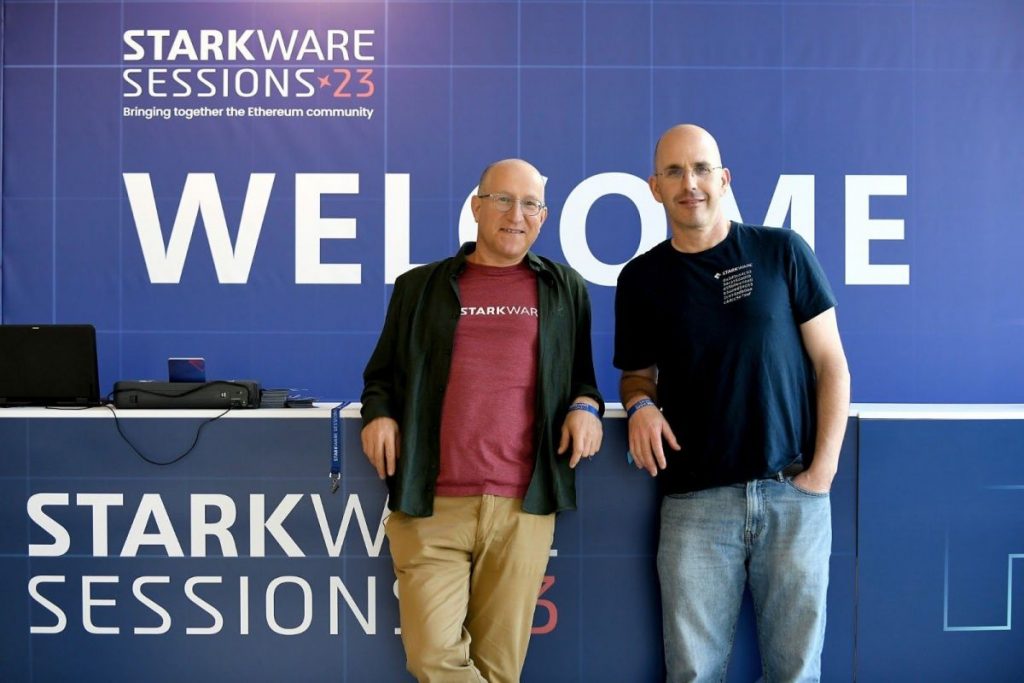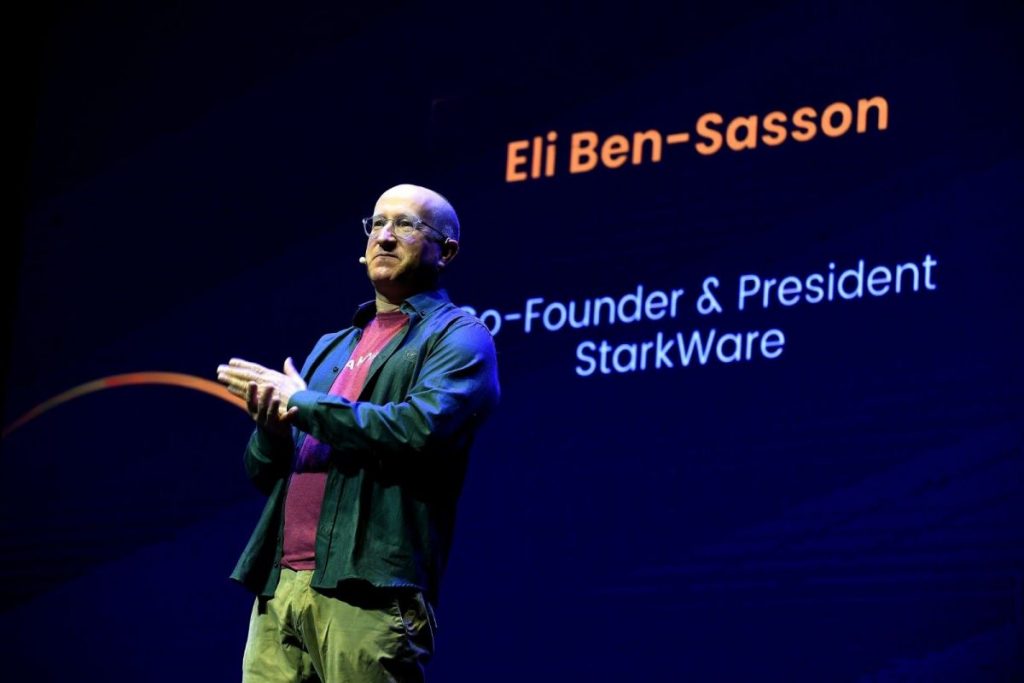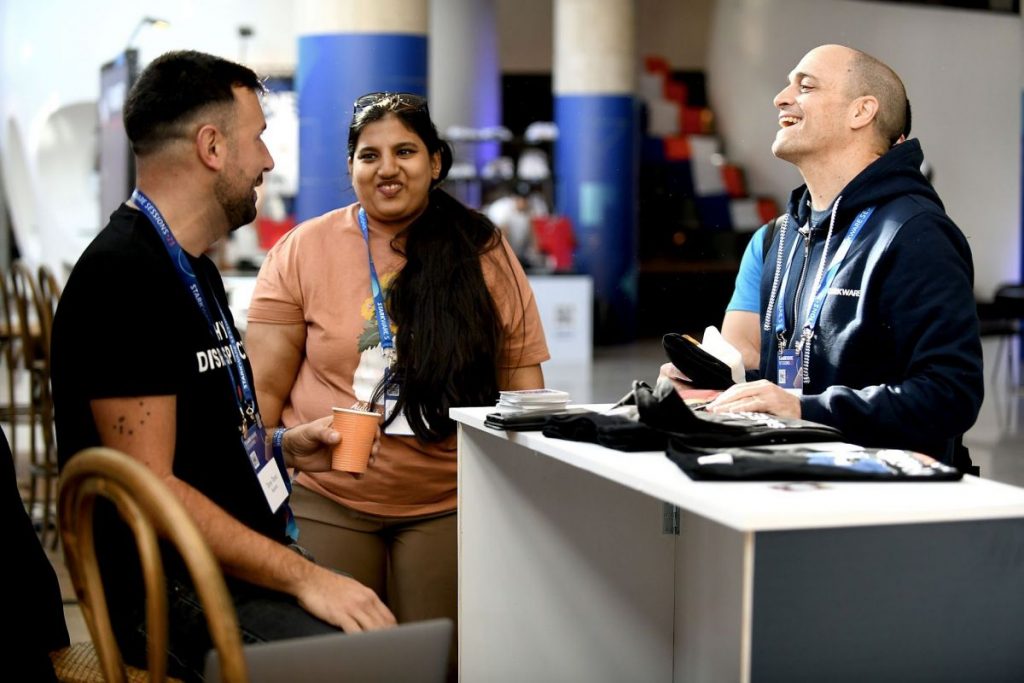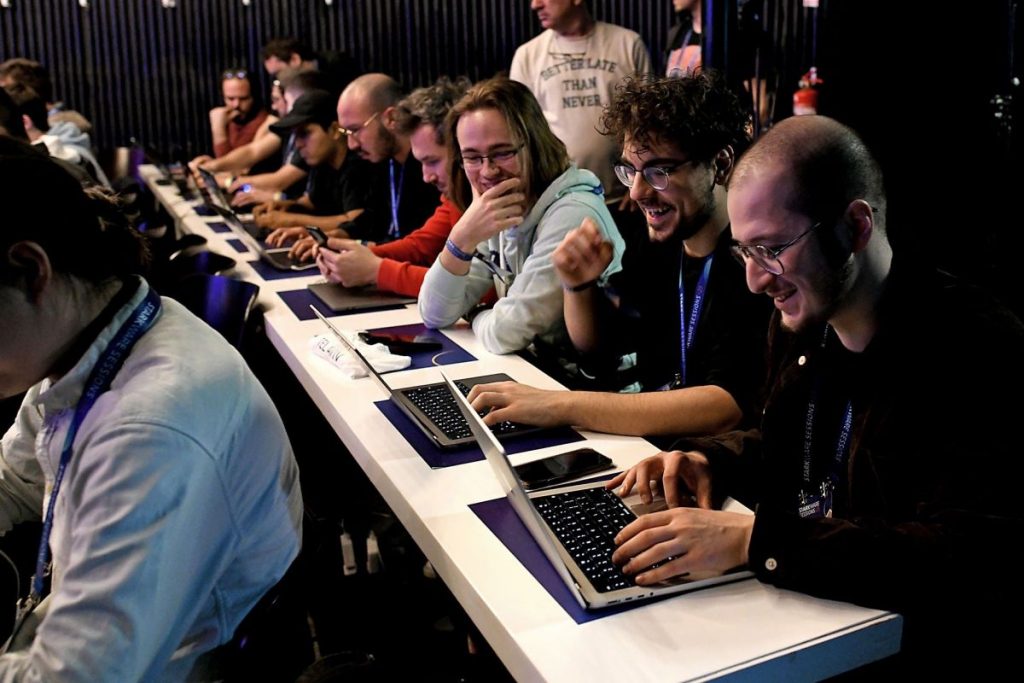Huge Event Lauds “End-to-End Funds Encryption” to Prevent the Next FTX-Style Theft

In Brief
StarkWare Sessions 2023 draws a crowd of 700, including top Ethereum builders
The mindset is shifting from “please don’t be evil” to “tech won’t “Let you be evil.”
This technology can get the next billion people using crypto.
In the largest event on new crypto technology since the FTX scandal, hundreds of innovators united to explore infrastructure that promises to make it impossible for exchanges to steal funds.
Some 700 crypto leaders, experts, and coders descended on Tel Aviv to discuss and showcase projects built on StarkEx and Starknet. These networks enable users to interact with exchanges confident in the knowledge that exchanges simply can’t misappropriate their funds.

“In everyday life, we all expect the messaging services we use to offer end-to-end encryption, meaning they handle our conversations but can’t listen in to them,” said the leading cryptographer Eli Ben-Sasson, one of the event organizers. “But we still use cryptosystems that let third parties like FTX get their hands on our funds.
The battle-tested technology we’ve spent exploring this week provides the equivalent of end-to-end encryption for trading over crypto, meaning no one can access and misappropriate funds. It’s about enabling mass adoption and ensuring people have access to a range of exchanges and applications while ensuring none of them can ever withdraw any funds without your explicit approval.
Ben-Sasson is co-founder and president of StarkWare, the $8 billion company that built StarkEx and Starknet and ran this week’s events, StarkWare Sessions 2023, a follow-up seminar, that finished on Tuesday. He is the co-inventor of the cryptography—the STARK protocols—which give the networks their “end-to-end encryption” quality while massively cutting transaction costs, otherwise called “gas fees.” StarkEx and Starknet are known as “Layer 2” networks that run over the Ethereum blockchain, which anchors their security. They have processed more than $800 billion in transactions and provide infrastructure for immutable X, sorare, and dYdX.

The design of STARK protocols empowers developers to offer a more user-friendly experience than is currently the norm in cryptocurrency—one closer to web2 sites users are so used to. While Starknet was built by StarkWare, it is decentralized and in the process of being transferred from StarWare control to community governance. Ben-Sasson announced at the Tel Aviv event that the core software powering the networks, the STARK Prove will be made open source.
A media announcement on Prove is here. Photos for this release are here.
“We’re seeing this STARK technology, which most people haven’t heard of but which will soon underpin the apps we all use, becoming public property,” said Itamar Lesuisse, co-founder and CEO of Argent, a company that created a smart wallet on StarkNet.”This is huge. It is fuelling the growth of a large community of people from all over the world who are excited to build on this infrastructure. We’re collectively saying: shift the paradigm in cryptography from “please don’t be evil” to “the tech means you just can’t possibly be evil.'”
Other speakers at the event included Cuy Sheffield, head of crypto at Visa, which had been experimenting with Starknet to facilitate crypto auto-payments; Uri Kolodny, StarkWare Co-founder and CEO; Dankrad Feist, a researcher at the Ethereum Foundation; Emin Gün Sirer, Co-Founder and CEO at Ava Labs; and the leading Ethereum protocol engineer, Tomasz Staczak, who is the founder and CEO at Nethermind; and the CTO of NFT-building protocol Briq Lancelot de Ferrière who said that as companies showcased new products or new code, the atmosphere at the event was reminiscent of presentations at early Internet conferences and early Apple announcements.

“The atmosphere at the event has been so lively,” he commented. Some of the presentations felt like early Steve Jobs announcements—those moments when those who understood the technology realized, ‘Wow, this is a moment of change.’ And others later understood the significance.
“Starknet attracts a lot of people who want to take crypto off the fringes. There’s a sense here that crypto isn’t the preserve of the elite—it’s the future for everyone. And there is a sense that we need to make it more user-friendly so that using blockchain feels natural. Like using the internet—no more technical, no less secure, but just like surfing the web. And also, not just for finance, but for a very broad range of uses.”
Motty Lavie, founder and CEO of Braavos, a smart contract wallet provider, said that the excitement about the advances in user experience that Starknet enables was tangible. He commented: “There was a strong feeling throughout the event that the StarkNet ecosystem has the potential to get the next billion people using crypto. And enable people to get started with no technical knowledge because we’re making that leap to an affordable and friendly user experience.
“As StarkNet becomes more mature and gets ready for prime time, its two strongest characteristics have dominated discussions. The first is the very low gas fees, which are a product of the way STARK cryptography works—bundling many transactions into a small, easy-to-verify proof, therefore making it far cheaper to write them to
the blockchain.
“The second is the innovation that enables a much better user experience, known as account abstraction. This means using crypto or web3 becomes very much like using classical web2 applications on the internet. Instead of maintaining and inputting complex seed phrases or knowing about technical concepts, e can simply use our phone’s built-in biometric to sign transactions using private keys capabilities and a strong security chip for authentication, for example, using a fingerprint or face recognition to sign transactions.

“We can bring this intuitive and simple experience to what we call self-custodial wallets, which means crypto that is completely under your control and cannot be accessed by anyone else. on your funds. It gives more people the confidence to use self-custodial solutions and not to default to centralized players, like FTX and others.”
Note: StarkWare Session 2023 took place in Tel Aviv on Sunday and Monday, February 5-6; a follow-up seminar took place on Tuesday, February 7.
Information and interview requests:
nathan@starkware.co
+972 52 685 2055
Telegram: @nathanje
Disclaimer
In line with the Trust Project guidelines, please note that the information provided on this page is not intended to be and should not be interpreted as legal, tax, investment, financial, or any other form of advice. It is important to only invest what you can afford to lose and to seek independent financial advice if you have any doubts. For further information, we suggest referring to the terms and conditions as well as the help and support pages provided by the issuer or advertiser. MetaversePost is committed to accurate, unbiased reporting, but market conditions are subject to change without notice.
About The Author
Damir is the team leader, product manager, and editor at Metaverse Post, covering topics such as AI/ML, AGI, LLMs, Metaverse, and Web3-related fields. His articles attract a massive audience of over a million users every month. He appears to be an expert with 10 years of experience in SEO and digital marketing. Damir has been mentioned in Mashable, Wired, Cointelegraph, The New Yorker, Inside.com, Entrepreneur, BeInCrypto, and other publications. He travels between the UAE, Turkey, Russia, and the CIS as a digital nomad. Damir earned a bachelor's degree in physics, which he believes has given him the critical thinking skills needed to be successful in the ever-changing landscape of the internet.
More articles

Damir is the team leader, product manager, and editor at Metaverse Post, covering topics such as AI/ML, AGI, LLMs, Metaverse, and Web3-related fields. His articles attract a massive audience of over a million users every month. He appears to be an expert with 10 years of experience in SEO and digital marketing. Damir has been mentioned in Mashable, Wired, Cointelegraph, The New Yorker, Inside.com, Entrepreneur, BeInCrypto, and other publications. He travels between the UAE, Turkey, Russia, and the CIS as a digital nomad. Damir earned a bachelor's degree in physics, which he believes has given him the critical thinking skills needed to be successful in the ever-changing landscape of the internet.























































